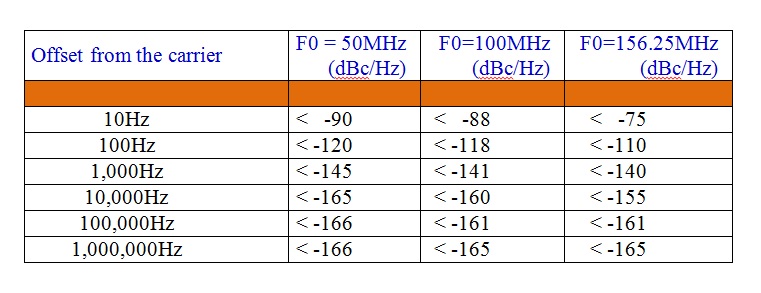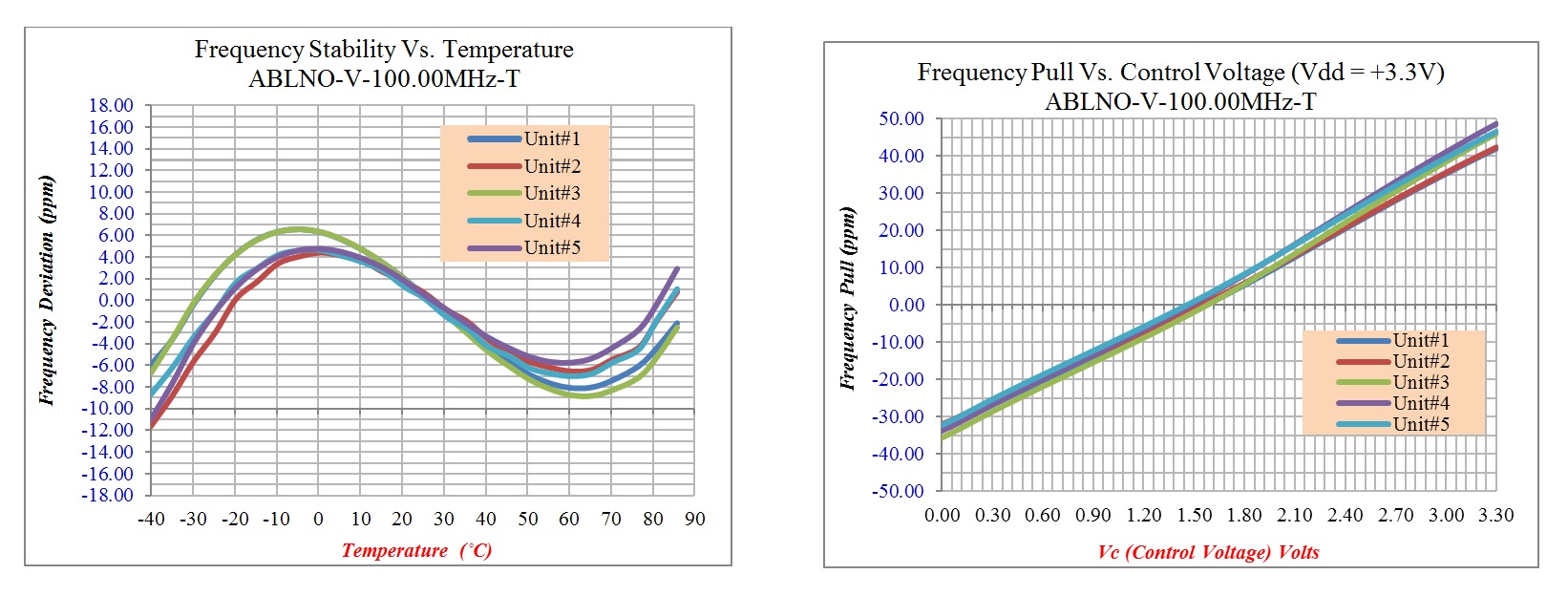Current state-of-the art communication circuitry, such as microwave frequency-up-converters, point-to-point µwave backhaul, satellite modems, high-end networking equipment, and test & measurement instruments, among others, all have one thing in common: an exceptionally low phase noise frequency reference.
Historically, to achieve this level of phase noise, oscillator manufacturers have relied on either SC-Cut crystals or 5th or 7th overtone AT-Cut crystals for their reference oscillator solutions. The former yields an OCXO which is bulky, consumes excessive power and is fairly expensive. The latter is complicated to implement, limited in frequency-offering and, inhibits system’s ability to self-correct for Aging and temperature drift.
To address the composite challenge of cost, size, power, frequency stability and long-term aging correction, the ABLNO series of VCXOs provides exceptional phase noise characteristics in a small (9 x 14-mm) package, with units available in fifteen standard frequencies between 50.0 and 156.25MHz. The devices are also available in fixed clock configuration. Table (1) summarizes the devices’ typical phase noise performance at 50, 100, and 156.25-MHz carriers when configured as VCXOs. Table (2) represents the absolute worst-case phase noise characteristics, and Table (3) shows jitter performance.
Table (1) Typical Phase Noise Performance

Table (2) Worst-Case Guaranteed Phase Noise Performance

Table (3) RMS Jitter

Proprietary quartz-blank processing techniques significantly reduce the frequency-versus-temperature error on these devices, which is typically less than ±12 ppm error (±18 ppm maximum) relative to the measured frequency at 25ºC. This stability is guaranteed over the operating temperature range of −40ºC to 85ºC, as shown in the left figure below. In addition, these devices are guaranteed to hold to better than ±7 ppm error due to aging over a 10-year product life. To facilitate frequency correction capability over this period, a minimum frequency pull-ability of ±28 ppm is guaranteed in VCXO configuration, as seen in the right figure below.

Stability with temperature (left) and frequency-pull versus control voltage (right)
 About the Author: Syed Raza is the Director of Engineering at Abracon Corporation, and has been in the Frequency Control Industry since 1993. He holds a BSEE, a US Patent and has held senior technical positions at Motorola & Netcom, prior to joining Abracon in 2007.
About the Author: Syed Raza is the Director of Engineering at Abracon Corporation, and has been in the Frequency Control Industry since 1993. He holds a BSEE, a US Patent and has held senior technical positions at Motorola & Netcom, prior to joining Abracon in 2007.
Advertisement
Learn more about Abracon





